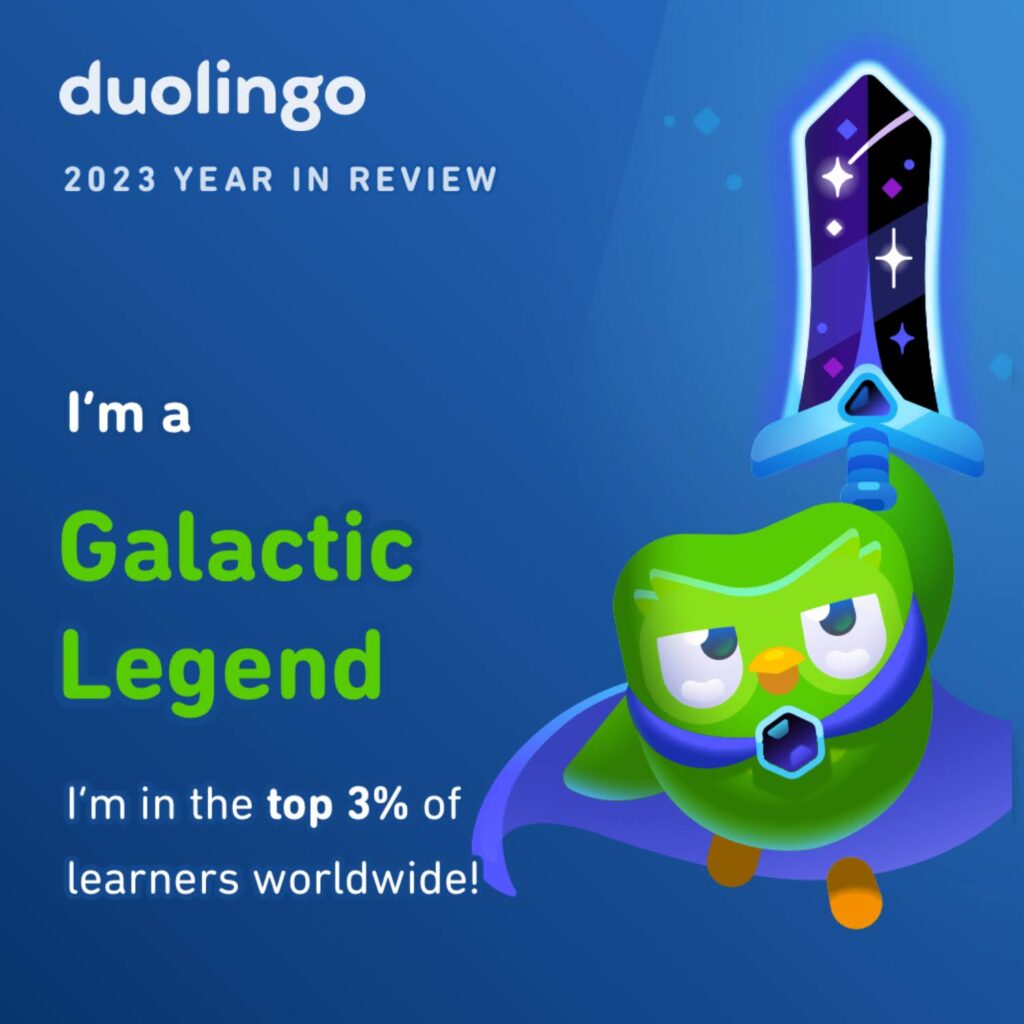
I have the nerve to be mad that the year in review is based on my November 30th progress. HAHAHAHAHAHA.

Hints on how A.E. Graves spends her imaginary spare time

I have the nerve to be mad that the year in review is based on my November 30th progress. HAHAHAHAHAHA.

I have several books in storage that I started reading before the move to my temporary apartment, and will likely need to start over when I get to unpack them. I have a long reading list of newer and older things that are waiting for my attention.
But what else am I reading, aside from daily news at WaPo and the UK Guardian, plus some posts on Mastodon (which I visit weekly-ish, only to fall into various research rabbit holes)?
The book I am most likely to stay up late reading: System Collapse (the Murderbot Diaries) by Martha Wells. I love Murderbot!
II have finished a few manga I haven’t written about yet. (Next weekend, maybe?)
Reading in progress, in no particular order:
I have started and stopped several manga that are not my cup of tea. While very few aren’t drawn consistently well (rare for published work!), there are some that start well but eventually all the girls are showering for no reason that advances the plot; they are nothing but fight scenes; they are about a video game, and a bit too much like playing one in which you respawn and have to replay the same levels; or they start strongly as a revenge tale, but somehow wind up having entire chapters that are discussions about… royal politics and agriculture??!? I won’t write about those. There are more fun things to write about!
I have abandoned a few audiobooks, but subscribe to support a local bookstore, so I’ll be back on that horse soon. I have several digital books that I will read if ever my eyes aren’t so tired from staring at screens (ahem).
I’ve written about several manga still being serialized, and want to provide an update on how far along they are now.
Ghost Reaper Girl by Akissa Saiké (at viz.com) went on a hiatus from May 2022 until returning October 2023. I hope this fun artist is back in full health! I likely wrote when there were twenty-something chapters: now, the latest Chapter is 37. Chloe Love is winning battles and scaring her demonic enemies, which is funny when you realize she is fighting Cthulhu mythos-y sorts of characters.
Kaiju No. 8 by Naoya Matsumoto (at viz.com) had 54 chapters when I last wrote about it, and now has 97! The situation has… escalated into some very organized kaiju wars, and the defense forces may not be ready for monsters who can THINK. Many chapters are a few minutes in a single battle in the greater war – there is a whole lot of fighting going on, and each character is pushing themselves to succeed for their own reasons.
Spy x Family by Tatsuyo Endo (at viz.com) was at volume 58 when I wrote about it. At the moment (in late 2023) there are 91 chapters published at Viz.com, and we’ve seen each member of the family at their most skilled at what they do, plus workplace crushes, actual hostage situations, and inappropriate brotherly love.
I’m still reading each of these, and look forward to additional issues.

Here’s another modest-but-fun pen in my collection, with matching velvety ink. I’ve been surprised at how many shades of gray ink are available, especially since some are so subtle and pale that I’m unsure how they can be used…
My handwriting with this style of pen is nicer when it is not hurried, but all of this year I’ve felt like I have so much to write and so little time that I can’t slow down…
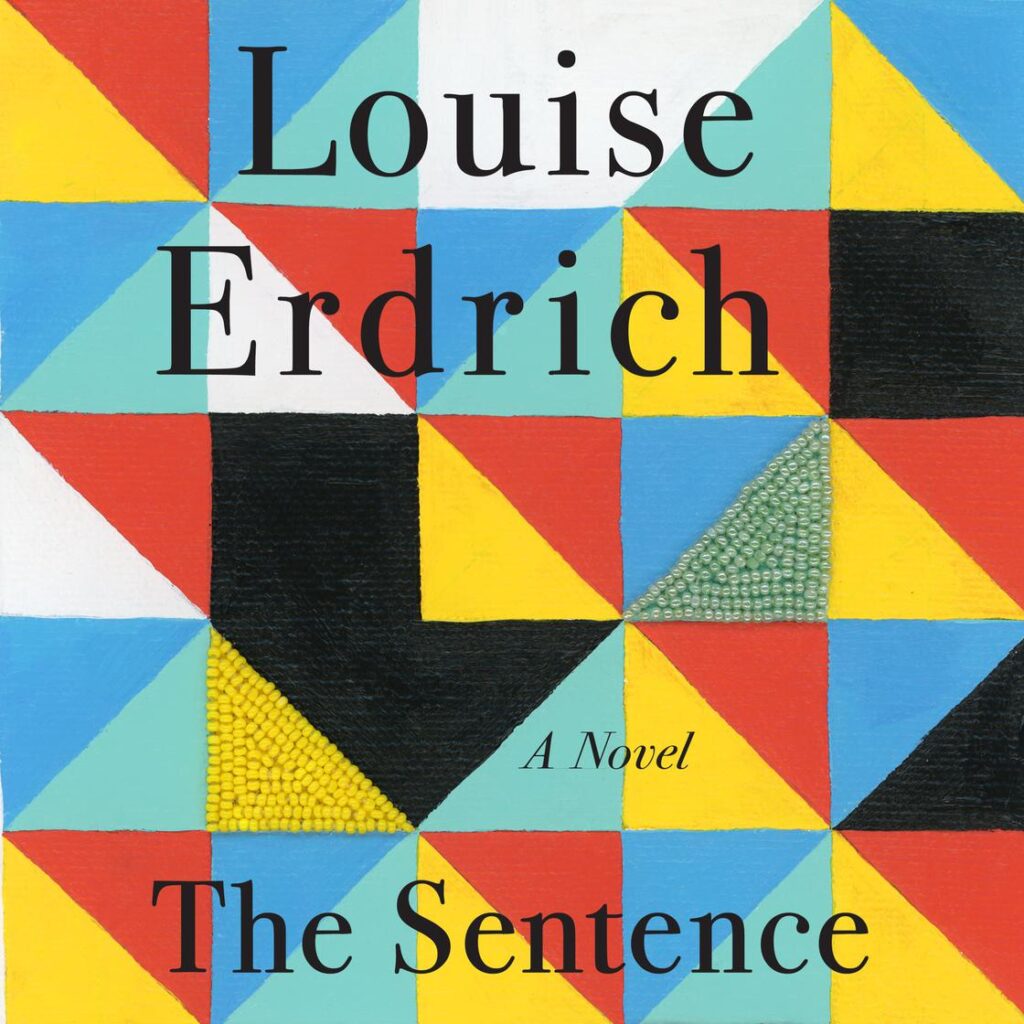
The Sentence
by Louise Erdrich
audiobook published by HarperAudio
2021
This audiobook, read by the author, gets off to a rough start: people in bad situations are making bad decisions, and the wrongness of it all started to dissuade me from sticking with it… but the story turns!
After Tookie’s bad decisions lead to a long prison sentence, books help her survive incarceration, and lead her to seek a job at an indigenous bookstore in Minneapolis.
Her passion for books makes her an effective bookseller, and her love for a former tribal policeman gives her a warm home life. However, the survival of the bookshop – and everyone she cares about in and outside of it – is in doubt when the COVID pandemic hits.
An eventful year unfolds. Tookie meets her unexpected grandchild-in-law, a white customer dies and haunts the store (!) creating cultural difficulties in her discussions with her husband about ghosts and fear the customer was killed by something she read (!), she experiences the routine annoyance of white people badgering her and her colleagues with their we-were-the-good-guys family mythologies about indigenous people, and George Floyd is murdered nearby. The protests, and the solidarity from the Indigenous experience with police, made this year-in-the-life tale feel completely current.
Erdrich, who is Chippewa herself, spins a heartfelt story of a difficult year of an indigenous person with a criminal record trying to hold her life together. Tookie has had a gritty upbringing and has developed unusual expertise in saying the wrong thing, but her actions are always infused with caring, good intentions, and books.
Erdrich’s love of books comes through very clearly in the writing, and this is one of those fiction books that comes with its own recommended reading list! (I am pretending that I will someday get to the books on the list!). It also includes friendly-but-serious bickering between characters about wild rice preferences.
This book is an unconventional narrative that portrays one imperfect woman’s experiences of recent global and US events, the ongoing challenges of being a previously incarcerated person, the aggravations of midwestern racism, and getting along with in-laws, plus abundant and heartfelt book-love. The book’s title will shift in meaning as you read it.
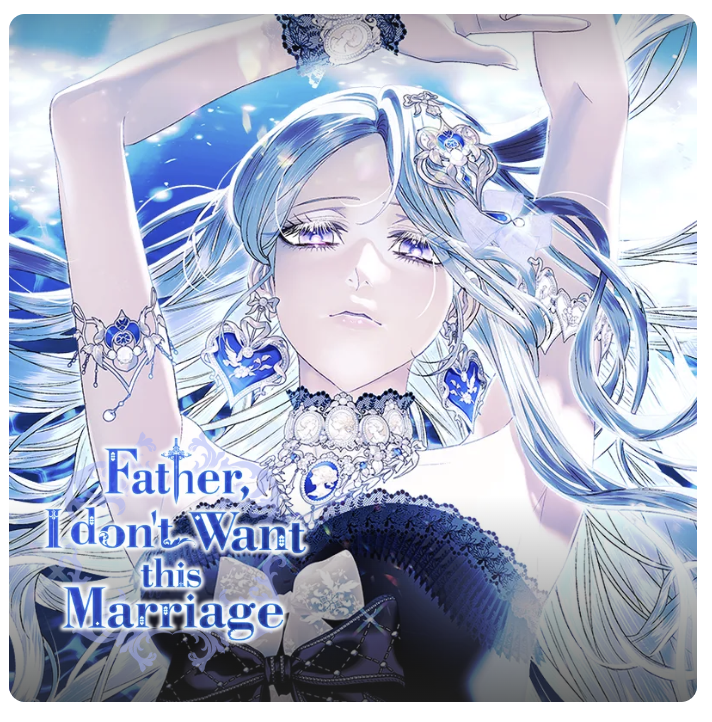
Father, I Don’t Want This Marriage
by Hong Heesu, Roal, & Yuri
published by Tappytoon.com
2019
This is the MOST FUN manga I’ve read in AGES. I laughed out loud! I squealed! I found myself impatient for new chapters! I have screenshots of the hot dad character saved on my phone! [*squeal*]
How on earth did this romance-action-comedy win me over, when I usually like my stories packed with sci-fi vehicles and dystopian struggles?
There are several good answers. CHARM. Enthusiasm. Humor. Artists who adore the characters they are drawing! COMEDY OUTTAKES and IN-HOUSE FAN ART AT THE END OF MANY CHAPTERS! Oh, sorry, I didn’t mean to shout, but those are the areas where I have the highest squealing-and-screenshot ratio.
Background: Tappytoon.com is a website for manga / comics / “webtoons” authored in Korea, which are serialized and sold in chapters. A common theme across the romance and action comics on this site is that a contemporary young person works themselves to death in the REAL world, and wakes up as a character in a favorite book or video game. Rather than being the hero/ine, they (often) find themselves in the role of a doomed villain, and (having read the book or played the game that is the secret script for this world), set out to upend the story by making very different decisions to change their fate. These are stories of redemption, heroism, second chances, and (for the romance heroines) opportunities to learn selflessness to earn the love of all around them.
This webtoon is my favorite of this model so far!
Plot: Our rich, pretty, noble-title-bearing heroine, Juvellian, wakes up in her book role, knowing that she loves a man who will betray her, she has lost the affection of her widowed father, and that she is fated to die a horrible, lonely death in a dark place. She wakes in the timeline after she is established as a villain but before things go completely rotten, and she decides that she will DO BETTER.
She starts a program of self-improvement, shedding the man she has been chasing and painstakingly redeeming her terrible reputation one person at a time. She is sincere, and wants to survive!
Comedy in the story takes many forms: the heroine is terrified of small, cute animals, but not the things/people that are life-threatening; ongoing mistaken identity situations lead the heroine astray in her conspiracy to dodge a marriage to a murderous royal; there is abundant, awkward teen romance silliness; there are constant father-daughter misunderstandings; there are masks; an overprotective and supernaturally handsome father terrorizes his daughter’s suitors; we see the stresses of small animals from their own points of view…
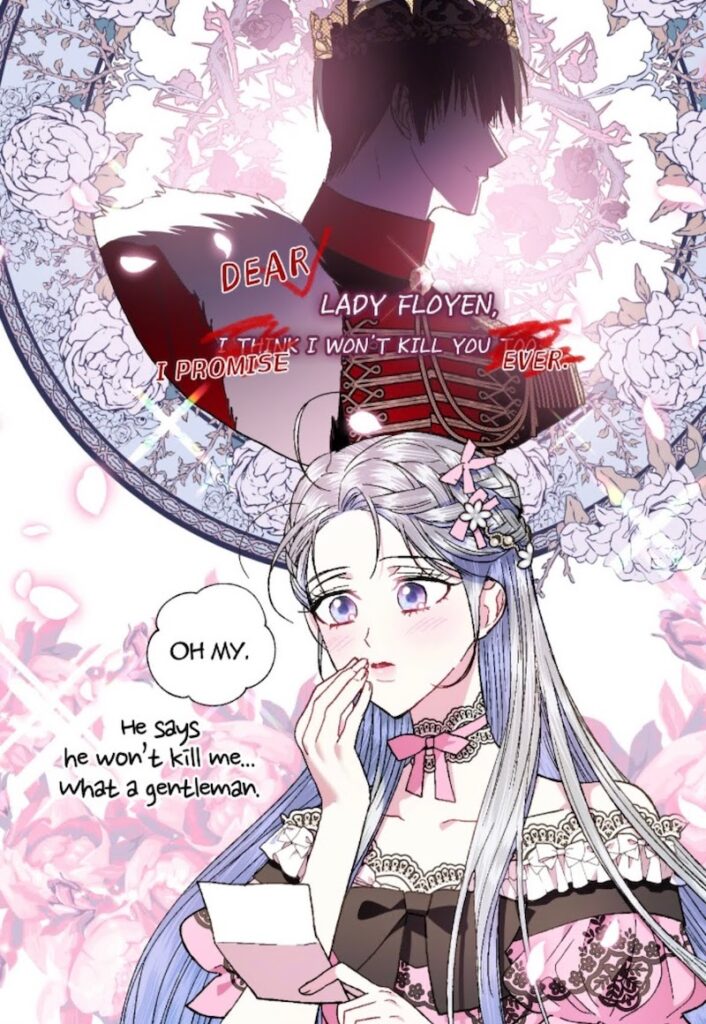
This is a period drama set in an imaginary version of [unspecified European place] so that everyone central to the plot can be rich, have too many fasteners on their clothing (a favorite theme of the illustrators!), live in palaces, have lots of idle time to get into trouble, AND can be at risk of execution by petulant local royals! There are politics, but also curses, vicious rumors, evil stepparents, very forbidden dungeons, poisons, neglected veterans, and rock-star-handsome knights.
The humor can be dry and very funny. Comedic, child-like (chibi) versions of the characters represent them in emotional moments. Cartoon wallpaper hovers behind them when they think they are being clever. There is overstatement, understatement, exaggeration, and so many other good humor-tools well applied.
This comic has teen-romance values: all the young ladies love the handsome knights because they are so “pure” (!?!), there is no kissing, nothing is racy, and marriages appear to be mostly made for class & political reasons. The heroine is very young, so the romance is a why-is-my-heart-racing, oh-gosh, how-did-I-never-notice-how-handsome-he-is slow path. And that’s fine! Both Juvelle and her eventual partner grow up and become better, braver, more responsible people during the events of this story.
There are giddy posts from other characters in the manga AND in our real world online about how handsome Legis Floyen (Juvellian’s father) is, and it was clear it was fun to draw him and his entourage. The artists’ giddiness is adorable (they love him in glasses, they love him at the beach, they love him with medallions…). I will show restraint, and share just one of those charming, in-house-fan-art images… with his shirt on. There are other favorite WHOLESOME images of Legis I could share, but they could hint at spoilers, and he is supposed to remain a mystery for many of the 123 chapters (!) I happily paid for. (Note that these comics are presented in English, but some fan sites used other translations, so Legis is Regis, Juvelle is Jubel, and the name of the comic itself has variations.)
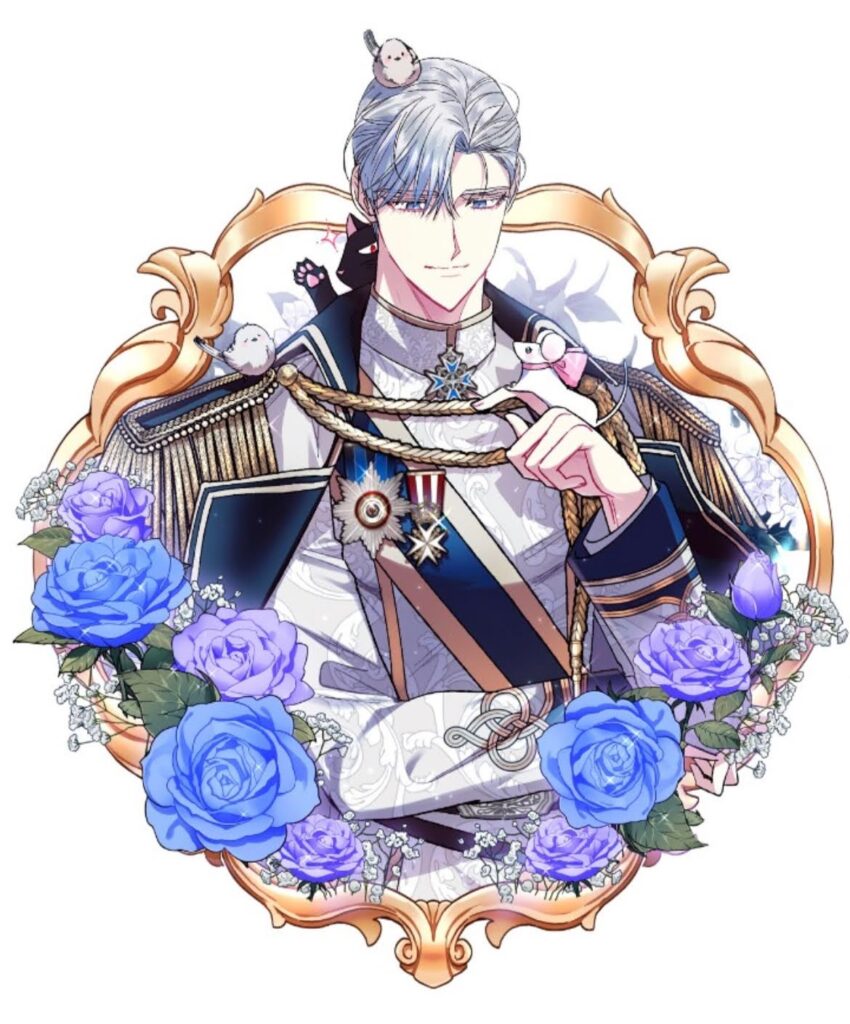
Any comic that keeps me reading for 123 chapters and can make me laugh out loud is a winner. This comic has so much going for it: high quality art (in color!) with lots of digital fabric textures, a brave and modern girl trying to set things right, action, curses, family secrets, monsters, garden parties, monsters at garden parties, ADORABLE characters, deathbed confessions, rivalries for the hot male lead title, excessive fasteners, and high stakes battles. It’s a winner! I love it! This team should hurry up and illustrate more stories about Legis so I can keep buying them!

While I’ve fallen behind in my posts here and at my fine art photo blog, I have been posting images semi-regularly to mobilelene.blogspot.com, my smartphone photo blog.
Yes, you may question the wisdom of trying to maintain three blogs. (I mean, who does that?) Just… roll with it, please.
I’ll periodically cross-post new content from those sites here, just to add variety to my book talk.
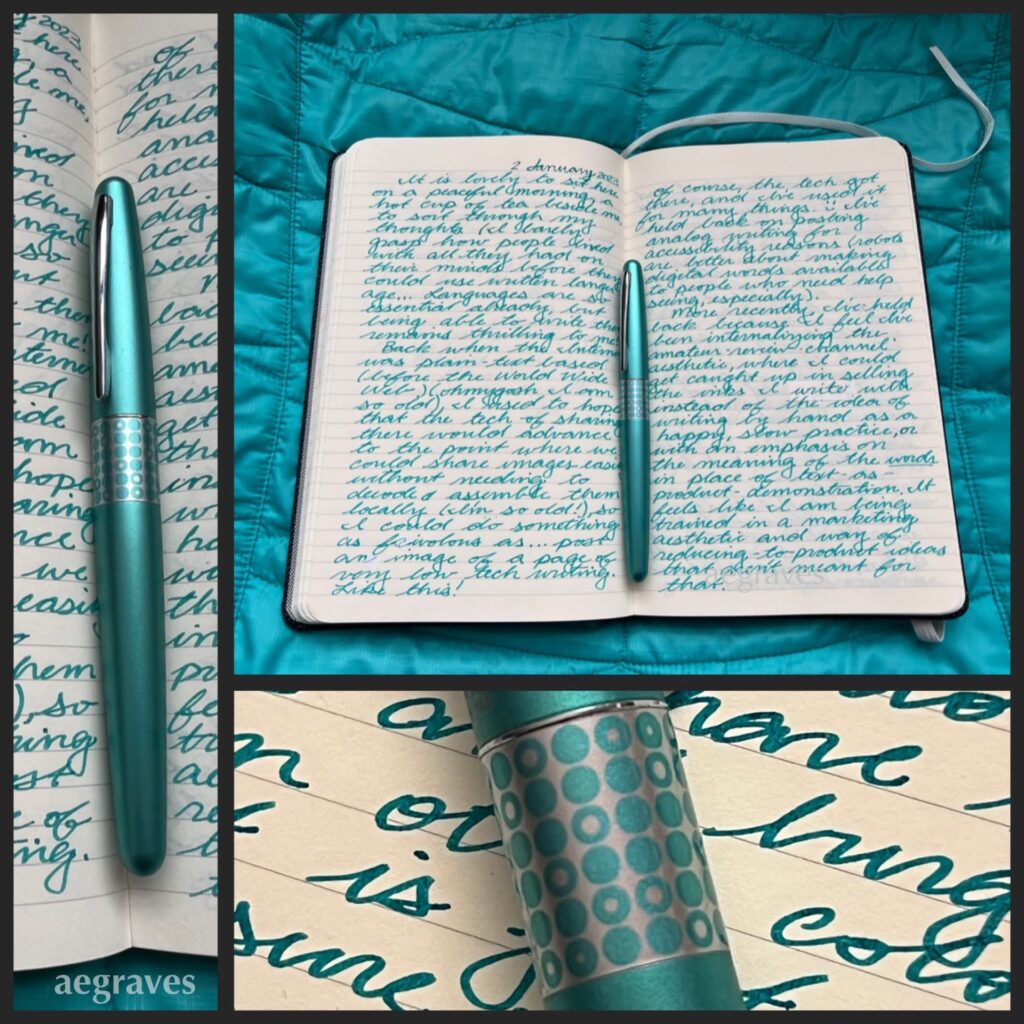
My elementary school encouraged and required all of us Kindergartners to keep a journal. We needed to practice writing, and having a black and white, speckled-cover composition notebook of our own was DELIGHTFUL. I filled mine with colorful-but-poorly-formed words! I wrote and illustrated stories about red-haired girls having adventures! IT WAS GREAT!
And, the habit stuck with me. By the time I was finishing college on weekends while working full time at a law firm (note: do not do this, it is exhausting), and the college offered a few units each semester for maintaining a journal, I jumped at the chance… and then startled my college advisor by filling it in the very first semester, and starting another…
I still write by hand, especially for letters to pen pals and journals. My hands get sore easily, so I can’t write with dry ball point pens for long: they involve too much pressing. It turns out that very wet gel pens are better (HELLO, Uni-ball SIGNO!), but I fly through them, and feel terrible throwing out handfuls of disposable pens each month. Refillable gel pens come and go, and are very portable, but still involve tossing significantly smaller bits of plastic and metal out almost daily. The lowest waste and lightest-ergonomic-touch pens I can use are fountain pens with “converters” that can be filled with ink directly from a bottle.
It turns out I LOVE writing with fountain pens.
I have friends who collect these, but when they spoke of it, I didn’t really grasp the point: they showed me the pens themselves, not what they were capable of, how they performed as pens. Also, they didn’t mention to me, an overzealous color fan, how many ink colors are available.
Now I know. Oh, do I ever know.
I’ve been reluctant to show off either my ink or pen collections, even though both are very modest. Despite their modesty, writing with these tools brings me disproportionately large joy. My reluctance comes from the popular ways of writing about products by presenting oneself as a semi-professional expert reviewer, who talks up the qualities of the product yet never really MAKES anything with them.
There are countless video tutorials on how to SWATCH EVERYTHING – how to provide samples of a display quality that would please a salesperson. But… why?
While this swatching approach may help me better document my watercolor paint tube collection and so prevent me from buying the same shades of celadon green accidentally, it’s awkward as one’s only shared output. (Also: one can never have too many shades of celadon.) I don’t really trust someone who has only swatched a paint to tell me whether or not it belongs in their paintbox for their actual painting practice (if they have one)… I have some credible enthusiast reviewer sources of fountain pen ink who have recommended against using inks they received for free AND who freely remark on beautiful inks that aren’t LEGIBLE for actual writing, and that is feedback I can use. But there is a lot of reviewing-popular-products-for-clicks content, and I don’t want to participate in that.
So, how will I be different? I’m going to show what I wrote with the pen and the ink for my own enjoyment. Maybe you’ll like it. Maybe you won’t. Perhaps styling of these images by coordinating pens, inks, and backdrops will prevent me from staring deeply into my favorite pen shop’s Instagram feed and purchasing pens I don’t need. I expect it to make my blog more visibly interesting.
Either way, now is a GREAT time to create these posts. Everyone in my mother’s family has terrible arthritis: my ability to write legibly with fancy pens won’t always be available! I’ll seize the (quiet, quaint, pen-geeky) moment.

Rag & Pulp: Creativity with Paper
By Correy Baldwin
Published by Uppercase Publishing, Inc., Calgary, Alberta, Canada
2023
Janine Vangool does many things well at Uppercase, and one of those is providing a video previewing every page of this book on here on this overview page! You know EXACTLY what you are getting before you order it! There are also non-video image spreads to show off selected contents. Go have a look.
This is a beautiful and hefty compilation of artist and manufacturer profiles relating to paper.
Paper sculptors, artists, watercolor paper manufacturers, paper cutters from multiple cultures (papel picado and Asian/international techniques), wet paper oragami artists, African paper bead makers, paper felt painters who form paper from poured colored fiber slurry… While I own multiple books about paper arts, this one has a greater breadth – famous and not famous, industrial and artisanal, Awagami Paper AND lone papermakers – and each profile is longer and more heavily illustrated than in most other such books, providing a better sense of each participant’s product range and/or creative practice. The caliber of the participants is high, and the range of content is impressive.
This is a very professionally produced collection of profiles, and I (a person who has visited paper-making museums in multiple countries!) enjoyed it very much.
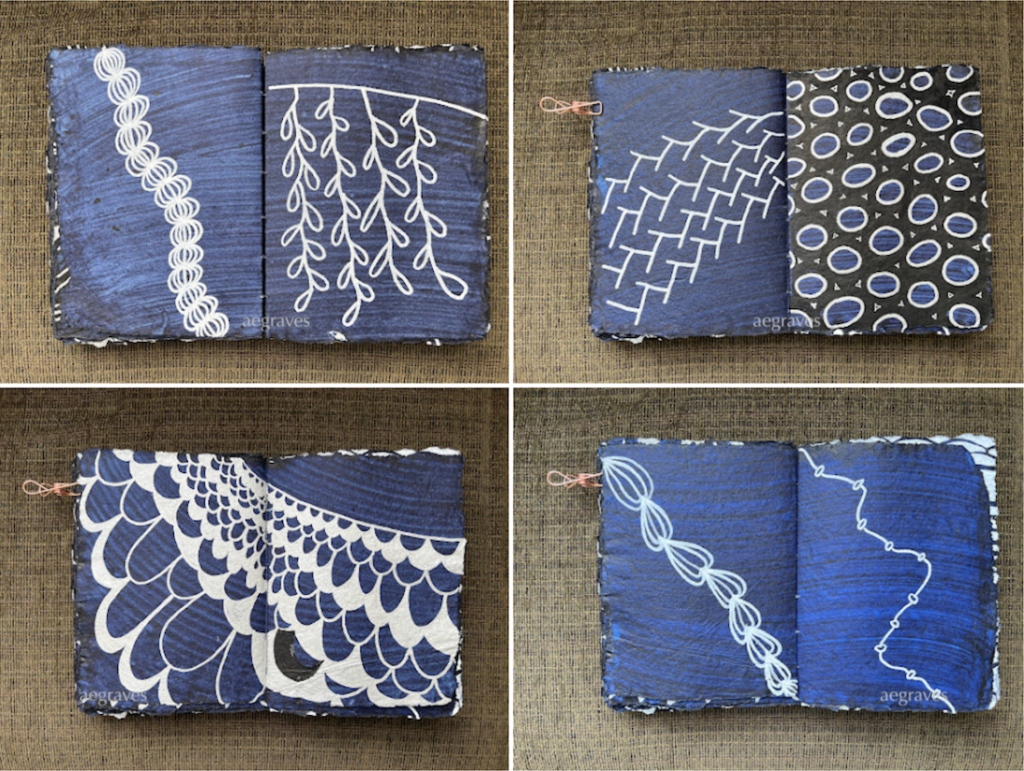
I addition to reading and writing books, I also DRAW in blank books.
The Topdrawer shop (topdrawershop.com), a subsidiary of Japan’s delightful Itoya brand, has been carrying these handmade, 100% cotton rag paper notebooks from Lamali for a while. They are deckle-edged (meaning you can see how the fibers filled out the frame, untrimmed) and have a nearly crispy texture. The indigo version of the book has indigo-painted pages, and there is something appealing about being able to see the brushmarks, which have a lot of character and variation.
I finally purchased an oversized notebook, and have been filling its pages with abstract acrylic ink drawings. The paper appears to be heavily sized, so my acrylic ink sits on the surface nicely without bleeding or feathering. the contrast is good. The textured surface is hard on the pen tips, but this is why I have replacement pen tips!
Any day I sit and enjoy drawing in this notebook with my markers is a good day.